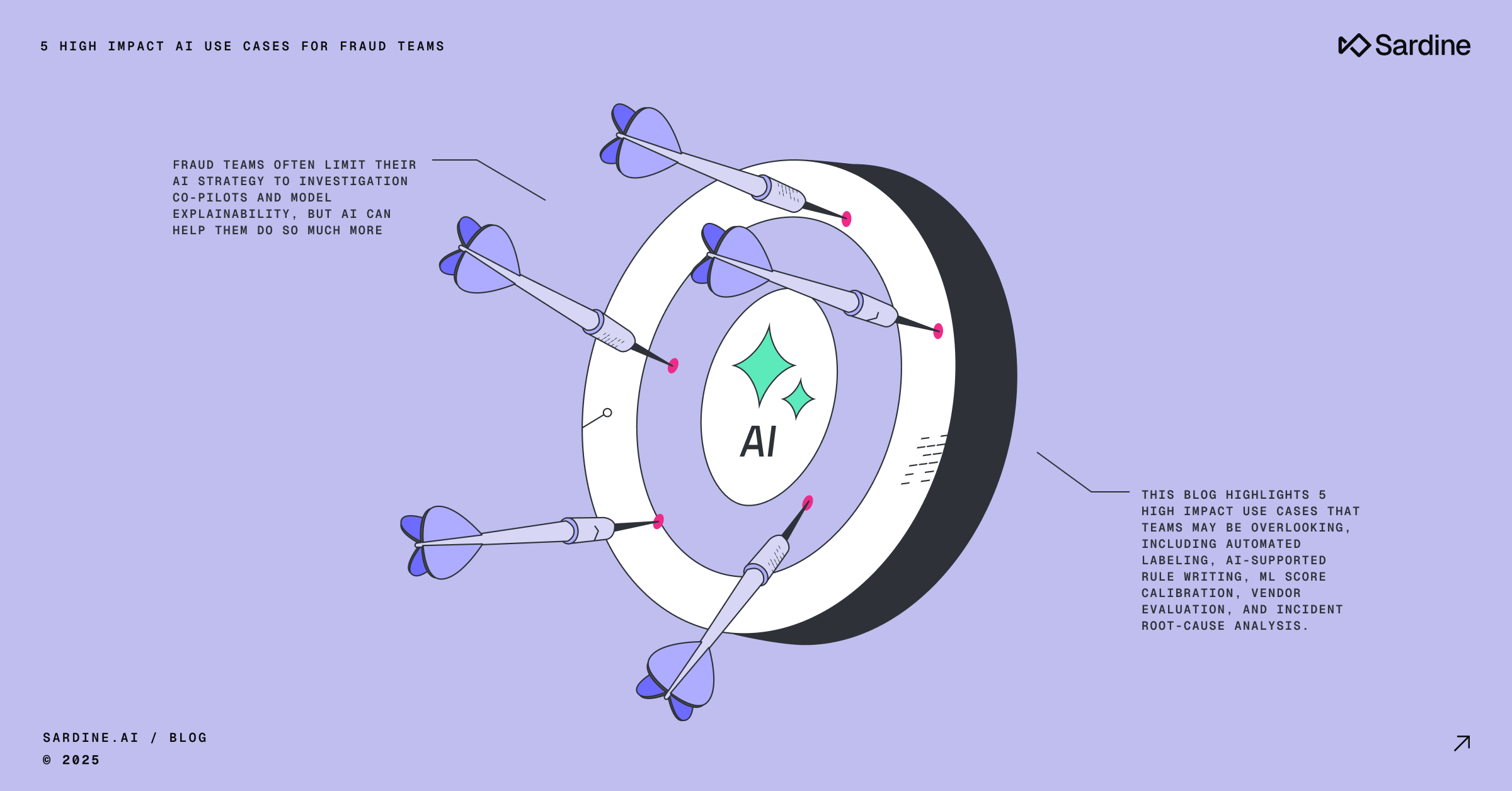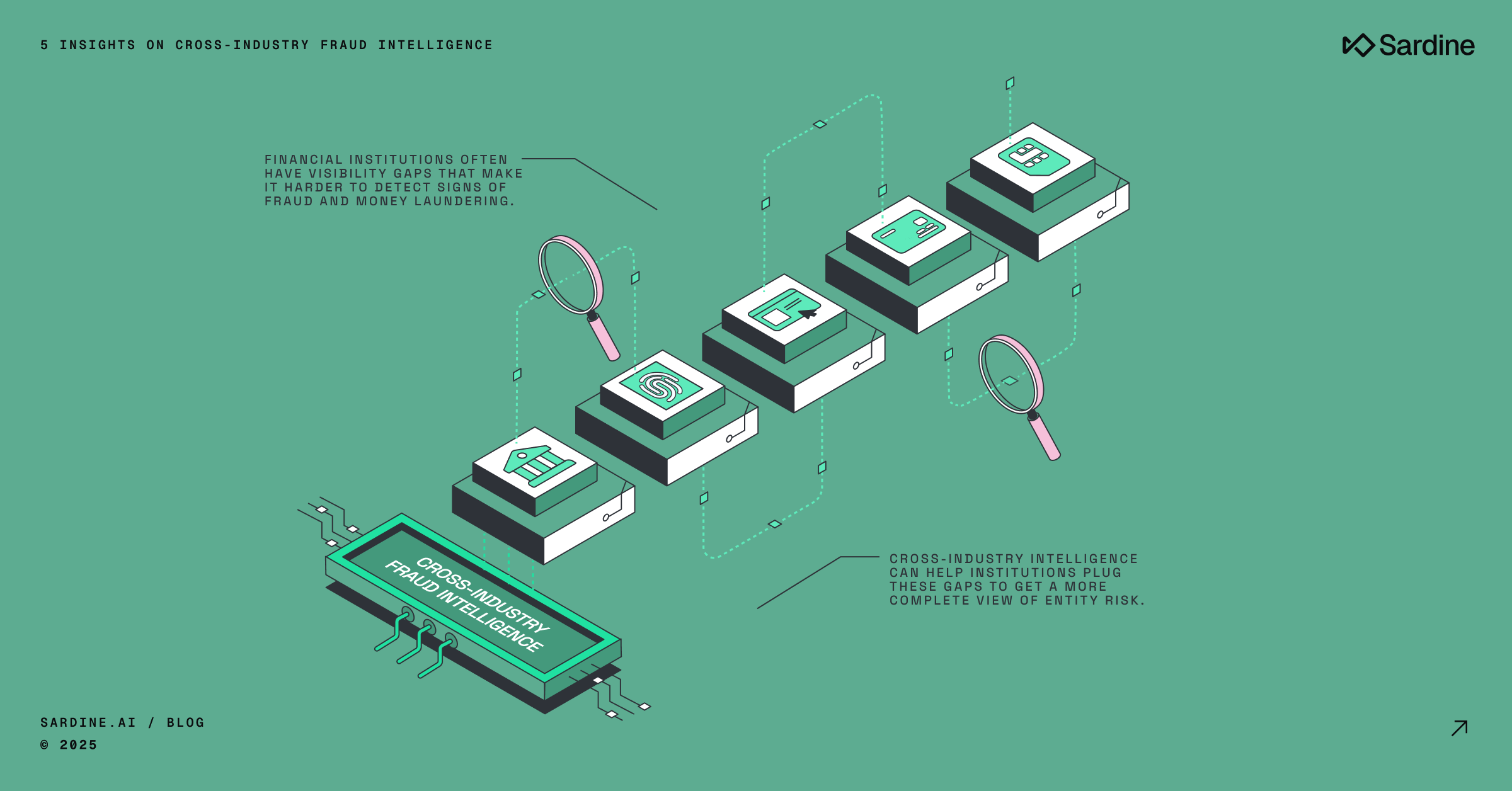Interview with Karisse Hendrick, Fraudology
This conversation was eye-opening. Karisse has stories from her career, that include testifying in federal court and tackling everything from synthetic identity fraud to complex chargeback schemes. Karisse believes in the power of collaboration and education, hosting merchant-only forums and calls to share knowledge and strategies.
Her dedication to the field has earned her accolades like the "Legend of e-commerce Award" at FraudCon and a spot among the “Top 100 Global Leaders in Finance.” If you’re serious about fighting fraud, Karisse is someone you want in your corner.
Let’s dig into some of the top takeaways from our webinar together.
The fastest-growing type of fraud
"One thing that keeps coming up is first-party fraud."
Whether it's marketplaces, e-commerce, or travel. No matter how different the company the single biggest issue is now first-party fraud. Seemingly “legitimate” customers are abusing chargebacks, finding ways to game refunds, or regularly returning items that are incorrect.
Takeaway: Yesterday’s fraud rules weren’t designed to catch fraud from seemingly legitimate customers. Fraudsters are getting smarter. The strange KPIs that show up in customer service, or with logistics teams may actually be fraud.
Collaboration is Key
"In fraud prevention, your competitors can be your greatest allies."
One of my favorite stories Karisse shared was when a competitor reached out to her after getting hammered by a sophisticated fraud scheme. Karisse defaulted to collaboration, sharing insights and strategies that led to a breakthrough for both companies..
Teamwork helps individual businesses and protects the entire industry against fraud. At Sardine, this is exactly how we see things.
By pooling our knowledge and resources, we create a stronger, more resilient defense against fraudsters.
One example is the data sharing consortium Sonar. Launched last year its aim is to bring together banks, fintechs, and merchants—some of which may compete against each other—to collaborate and share data with each other in an effort to reduce first-party fraud, scams, and money laundering.
Takeaway: Don’t operate in silos. Share information and collaborate with other fraud fighters. This collective knowledge can help you recognize and respond to new fraud tactics faster.
AI + humans in the loop is the future of fraud prevention
"AI can flag the red flags, but it takes a human to see the story behind them."
An AI system had flagged an account for suspicious activity, but the seasoned analyst noticed the subtle, telling signs confirming the fraud.
In the early days of e-commerce, payment volumes and, therefore, fraud volumes were relatively small. Fraud teams could investigate each case individually.
As payment volumes skyrocketed, so has fraud. Every company is now a fraud-fighting company. This means tools once considered cutting-edge feel like using a hammer to create a spreadsheet.
Karisse talked about the evolution of tools, and how AI has become critical in finding the anomalies and patterns, but it's when you co-pilot the AI you really start to see results.
As Soup's has noted in the past (link to blog) Machine Learning is great at spotting anomalies; rules can then help block or manage fraud patterns you see often and today, Gen AI has new use cases. A handful we're seeing include the ability to auto dispute a chargeback (cue, "feature dropYou need a human in the mix to guide these AIs, teaching them what to look for, how to interpret data and understand how those patterns shift over time. The tech is your ally, providing deeper insights and enabling you to scale your efforts effectively.
Takeaway: While AI and machine learning are powerful tools, the human element is irreplaceable. Ensure your team is trained to interpret and act on the data provided by your tech solutions. Combining advanced technology and human intuition is your best defense against evolving fraud tactics.
Staying Ahead of Fraudsters
"Fraudsters are always a step ahead—until they're not."
Karisse shared a jaw-dropping example of how fast fraud tactics can evolve. Fraudsters found a loophole in a new payment method being piloted and pounced on it.
This method didn’t yet have advanced fraud controls, and the fraudsters had quickly figured out they could use the service to exploit the e-commerce platform. Every change is an opportunity for them.
A lot of the fraud we see today—payment fraud, account takeovers, fake accounts—are attack types as old as time. But the techniques are constantly changing.
Fraudsters now use bots and GenAI for greater scale, deploy sophisticated tools like emulators, headless browsers, and proxies to mask their activities, and exploit new vulnerabilities as business models evolve, company policies shift, and regulations change. It’s a relentless arms race.
Much of the game revolves around making a fraudster’s job so difficult that it becomes unprofitable to attack you. If you can mak the ROI calculation of fraud negative, they’re less likely to want to commit the fraud in the first place.
Takeaway: Continuously monitor and test new systems and payment methods. Conduct regular penetration testing and stay updated on the latest fraud trends to identify and close vulnerabilities before fraudsters can exploit them. Make the fraudsters' job so hard that it becomes unprofitable to attack you.
Real-World Strategies for Fraud Fighters
Karisse's insights are not just stories but practical lessons everyone in the fraud squad can implement. Here are some actionable strategies she emphasized:
- Multi-layered Verification: Relying on basic checks is no longer enough. Implement multi-layered verification processes that include document verification, behavioral analytics, and liveness checks.
- Collaborate Widely: Sharing is caring, especially in fraud prevention. Build a network of fraud prevention professionals and regularly share insights and strategies. At Sardine, we launched a fraud data-sharing consortium to bring together banks, fintechs, and merchants. By pooling our knowledge and resources, we create a stronger, more resilient defense against fraudsters. We also run a series of fraud squad dinners to help informally share lessons and approaches.
- Balance Tech with Human Insight: AI and machine learning are game-changers, but they can't do it all. Ensure your team is trained to interpret and act on the data provided by your tech solutions. Our customers use our GenAI, Finley, to handle tasks like creating rules, reviewing cases, and preparing SARs. But it’s the human analysts who guide these AIs, teaching them to find meaning in the data and adapt to changing patterns.
- Regular Fraud Penetration Testing: Fraud tactics evolve at lightning speed. Continuously monitor and test new systems and payment methods. Conduct regular penetration testing to identify weaknesses in your systems and processes before fraudsters can exploit them. Staying ahead means making their job so hard that it becomes unprofitable to attack you.
- Stay Informed: The fraud landscape is always shifting. Keep up with the latest trends and tactics in fraud by attending conferences, joining industry groups, and reading up on the latest cases and strategies. Knowledge is power, and staying informed is your best weapon in the fight against fraud.
Subscribe for more risk content
If you liked this blog, check out our webinar with Karisse for the full interview. We also recommend visiting our blog for more insights on fraud and compliance. And don’t forget to subscribe to our newsletter for insights delivered directly to your inbox.
If you need help with a fraud challenge, the experts at Sardine are ready to discuss how we can help. Visit sardine.ai/contact.



%20(1).png)








